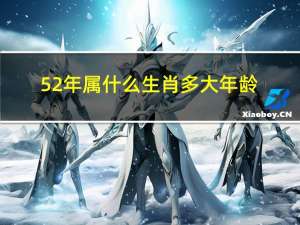春节来源与发展英文

春节的来历英文版
Spring Festival, also known as Chinese New Year, is the most solemn and unique traditional festival for the Chinese people. It has a long history and can be traced back to the Yin and Shang dynasties. According to the lunar calendar, it starts on the first day of the first lunar month and lasts until the fifteenth day, which is also called Lantern Festival.
The origin of Spring Festival has a basis in history and is enriched with various folk legends and fables. One of the most famous legends is about a mythical beast called \"Nian\" that would come out on the New Year\'s Eve to harm people and livestock. To protect themselves, the ancient Chinese started the tradition of decorating their houses with red couplets, lighting firecrackers, and setting off fireworks to scare away the evil spirit. This tradition has been passed down from generation to generation and has become an essential part of the Spring Festival celebrations.
Another legend tells the story of \"Nüwa,\" a goddess in Chinese mythology, who created humans on the first day of the Chinese lunar calendar. Therefore, the Chinese people celebrate the Spring Festival to commemorate the day when humankind was created.
During the Spring Festival, Chinese families gather together for a reunion dinner on New Year\'s Eve, exchange red envelopes with money as a symbol of good luck, and visit temples to pray for blessings. Lion and dragon dances, traditional performances, and lantern festivals are also organized to add excitement and joy to the celebrations.
介绍春节的来历
The Chinese New Year, known as the Spring Festival, has a deep historical background dating back to ancient times. It is a time when people celebrate the beginning of a new year and bid farewell to the old one. The Spring Festival is considered the most important and lively traditional festival in China.
According to historical records, the Spring Festival originated from the tradition of worshiping ancestors and gods during the Shang Dynasty, around 1600 BC. It was believed that by offering sacrifices to the gods, people could obtain blessings for the coming year and ensure a prosperous harvest. Over time, this religious ceremony evolved into a festive celebration that includes various customs and traditions.
One of the significant customs during the Spring Festival is the reunion dinner, which brings together family members from near and far to share a meal. This tradition represents the importance of family ties and symbolizes unity and harmony. Another custom is the practice of giving red envelopes filled with money to children and unmarried individuals as a gesture of good luck and blessings for the year ahead.
The Spring Festival also showcases various traditional activities, such as dragon and lion dances, lantern festivals, and temple fairs. These cultural events not only provide entertainment but also preserve and pass on the Chinese cultural heritage to future generations.
春节的来历
The Chinese New Year, also known as the Spring Festival, has a fascinating origin rooted in ancient Chinese history. The festival is celebrated based on the lunar calendar and marks the beginning of a new lunar year.
The Spring Festival has its roots in the agrarian society of ancient China, where people relied heavily on farming for their livelihood. It was a time to celebrate the end of winter and welcome the arrival of spring, which brought hopes for a successful harvest and a prosperous year ahead.
During the Zhou Dynasty (1046-256 BC), the Spring Festival began to take shape as a grand event with various customs and traditions. It was believed that during this time, the gods would descend to earth to inspect human affairs. To ensure a smooth transition into the new year, people would prepare offerings and sacrifices to honor the gods and seek their blessings.
Over time, the Spring Festival evolved to include cultural and religious practices, such as lion and dragon dances, fireworks, and the lighting of lanterns. These activities were believed to drive away evil spirits and bring good fortune.
Today, the Spring Festival remains an important cultural celebration in China and is cherished for its rich traditions, festive atmosphere, and emphasis on family reunion. It is a time of joy, reflection, and anticipation for the year ahead.
春节的来历和习俗
The Spring Festival, also known as Chinese New Year, is the most significant traditional festival in China with a rich historical background and a variety of customs.
According to Chinese folklore, the Spring Festival originated from the mythological creature called \"Nian.\" It was believed that Nian would appear on New Year\'s Eve to terrorize villagers, devour livestock, and harm humans. To ward off Nian\'s attacks, people would put up red decorations, light firecrackers, and make loud noises, as it was believed that Nian was afraid of the color red and loud sounds. These practices have been passed down through generations and have become integral parts of the Spring Festival celebrations.
In addition to the Nian legend, the Spring Festival is also closely associated with agrarian traditions. It marks the end of winter and the beginning of spring, symbolizing the hope for a prosperous year and a bountiful harvest. Traditional customs include the reunion dinner, where families gather to enjoy a feast, the exchange of red envelopes containing money as a symbol of good luck, and the setting off of fireworks to drive away evil spirits.
The Spring Festival also features various cultural activities, including lion and dragon dances, lantern festivals, and temple fairs. These events showcase the vibrant traditions and artistic talents of the Chinese people.
Overall, the Spring Festival is a time of joy, celebration, and cultural significance. It brings families together, strengthens social bonds, and promotes the richness of Chinese heritage.













